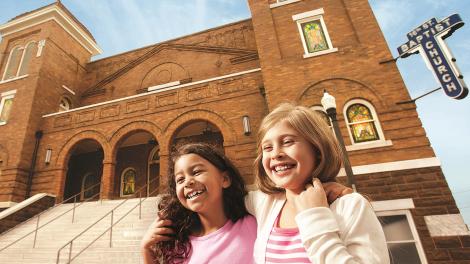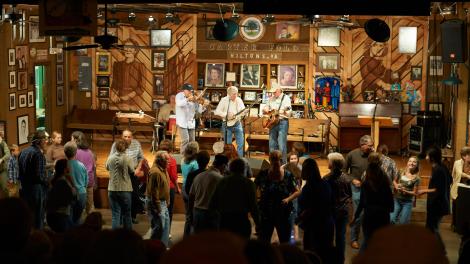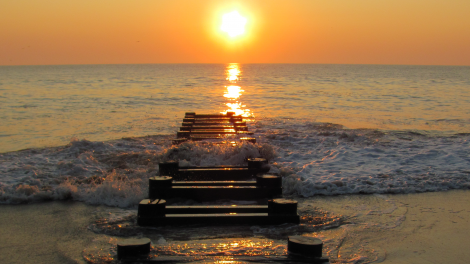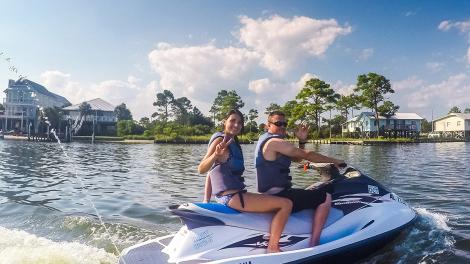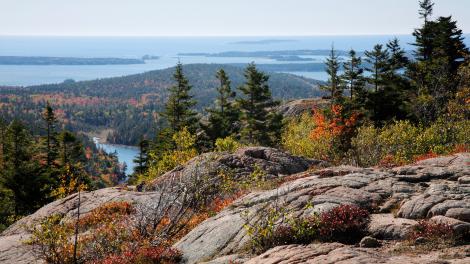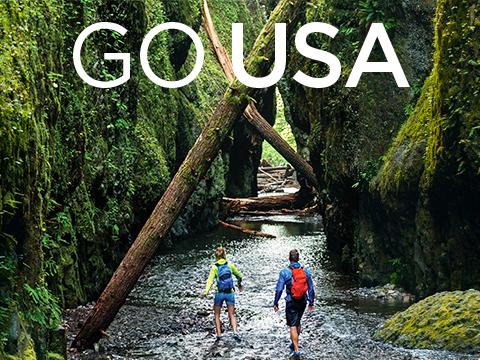
U.S. Accessibility Guide: The Great Outdoors
Accessible natural areas in the USA
Everyone needs a breath of fresh air from time to time; luckily, the USA presents endless opportunities to get out and enjoy the great outdoors. While every mountain peak cannot be reached by everybody, the U.S. National Park Service has committed to providing visitors and locals of all abilities equal opportunity to enjoy their facilities, programs and services, as well as indoor and outdoor activities. Travelers will also find accessible options at state and local parks, as well as mountain and beach resorts, across the country.
Accessibility Options
• Exploring the USA’s breathtaking landscapes has never been easier thanks to wheelchair-accessible boardwalks, pathways and paved surfaces that have been implemented in many national and state parks.
• National and state parks across the USA are introducing new all-terrain motorized wheelchairs. These specialized wheelchairs allow guests to explore challenging trails, including navigating steep inclines, snow, debris and even swamps. All-terrain wheelchair technology will enable people with mobility challenges to have more complete access to parks, as the chairs' tank-like tracks can traverse most trails. The wheelchairs are available for rent at no charge and visitors can inquire about them at park services offices.
• For visually and hearing-impaired visitors, select parks offer braille waypoints on trails, as well as assisted listening devices for tours. Some national and state parks also offer sensory garden experiences.
• The NPS app for smartphones is the official app for the National Park Service and provides up-to-date accessibility information for facilities and trails for more than 400 national parks across the USA. The app also offers audio descriptions and a wealth of accessibility features.
• Select ranger programs have sign language interpreters available for visitors who are hearing impaired. Inquire with the National Park Service to confirm details for available options.
• Other accessibility options include captioning for on-site films and presentations, assistive listening devices, wheelchair-accessible campsites, adaptive sports, designated parking and motorized wheelchairs and scooters.
• Select national and state parks as well as recreation sites allow service dogs under certain circumstances. It’s recommended to contact the park you plan to visit for confirmation.
Popular Accessibility-Friendly National Parks
While most of the USA’s national parks offer some level of accessible travel options, these seven options should make your must-see list.
Yosemite National Park, California: Visitors with disabilities can enjoy the beauty of Yosemite National Park, which continues to make inclusiveness for all guests a top priority. Marvel at towering trees, snap photos of cascading waterfalls and explore the majestic granite formations. Accessible parking is available along with free wheelchair rentals, shuttle busses, service animal access and accessible lodging that includes campgrounds and picnic areas.
Yellowstone National Park, Wyoming: One of Yellowstone National Park’s top priorities is providing a universally accessible experience to all visitors. While many of the facilities are older, the park continues to transition to a more accessible environment. Sign language interpreters are available if three weeks’ notice is provided. Closed captioning on visitor center videos offers accessibility for the hearing impaired, while all campgrounds have at least one wheelchair-accessible site.
Apostle Islands National Lakeshore, Wisconsin: On the shores of Lake Superior in northern Wisconsin, the Apostle Islands National Lakeshore is making great strides toward accessibility. The park received the “Accessibility Excellence” award in 2017 for its accessible campsites on Sand Island and Stockton Island-Quarry Bay and continues to make strides to accommodate travelers of all abilities. Visitor centers throughout the park have been updated to accommodate wheelchairs, and large print guides are available upon request as well as hearing devices for some outdoor exhibitions.
Acadia National Park, Maine: Known for its spectacular fall foliage and scenic drives, Acadia National Park strives at being accessible for visitors regardless of disability. Accessibility accommodations within the park include but are not limited to service animal access, free wheelchair-accessible shuttles, assistive listening devices, and audio tours of the 90-kilometer Park Loop Road, Cadillac Summit and Somes Sound.
Big Bend National Park, Texas: Among its towering rock formations and winding hiking trails and rivers, Big Bend National Park offers accessibility options. While not all areas of the park are fully accessible, guests will find park rangers on call to assist with any special needs. Many of the visitor centers have been updated to provide wheelchair accessibility and some campgrounds offer wheelchair-accessible vault toilets. Picnic areas provide wheelchair accessible tables while several hiking trails are wide enough for wheelchairs.
Everglades National Park, Florida: Explore the vast marshlands of the Florida Everglades, keeping an eye out for alligators, birds and other local wildlife. With a mission to make the park accessible to everyone, it offers accessible facilities, services and programs that include but are not limited to camping, boat tours and access to assistive learning devices.
San Juan National Historic Site, Puerto Rico: While the structures at this park were built more than 400 years ago and preserved for an authentic experience, the San Juan National Historic Site ensures guests within the ability community can access areas of the park. Two main areas, the Castillo San Cristobal and Castillo San Felipe del Morro provide accessibility options with accessible restrooms, water fountains, a bookstore and theater. The park films are shown in both English and Spanish with captions and assisted listening devices available upon request.

